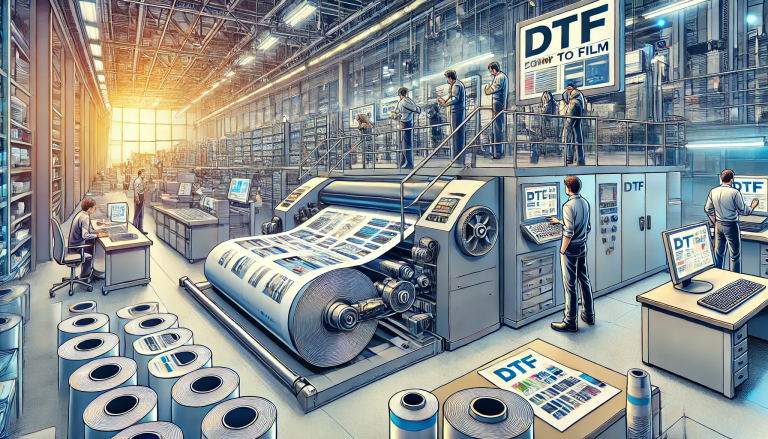“Is DTF the Same as UV Printing? Decoding the Print Jargons” -MAXDTF- Direct to Transfer UV DTF Film Wholesale, UV DTF Adhesive Transfer Paper Factory, Made in China
In the vast realm of printing technologies, it’s easy to get lost amidst the myriad of terms and acronyms. Two such terminologies that often cause confusion are DTF and UV printing. While both are innovative and have transformed the world of printing, they are fundamentally different in many ways. Let’s break down these terms and understand if DTF is the same as UV printing.
1. DTF: What Is It?
DTF stands for Direct to Film. It’s a relatively new method of apparel printing that involves printing designs onto a special type of film which is then heat-transferred onto fabric. Here’s how it works:
- The design is first printed on a PET film using specific DTF inks.
- Powder adhesive is applied to the printed film.
- The design, now on the film, is transferred onto the fabric using heat press machines.
- The end result is a vibrant, durable design that feels soft to touch.
Key Advantages of DTF:
- Works well for full-color designs, including those with gradients.
- Doesn’t require pre-treatment for colored garments, unlike some other printing methods.
- Capable of printing on various materials, including cotton, polyester, and blends.
2. UV Printing: The Basics
UV printing involves using ultraviolet lights to dry or “cure” the ink as it’s printed. As the printer distributes ink on the surface of a material (like acrylic or glass), specially designed UV lights follow close behind, instantly curing the ink.
Key Features of UV Printing:
- Instant Drying: The ink dries immediately once exposed to the UV light, which means there’s no risk of the print smudging or pooling.
- Versatility: It can be used to print on a wide array of surfaces, from paper and glass to metal and acrylic.
- Vibrant and Durable: UV-cured inks are fade-resistant, and they can withstand exposure to sunlight without fading.
3. DTF vs. UV Printing: The Key Differences
- Application: While DTF is primarily used for apparel printing, UV printing has broader applications, including signage, merchandise, and even décor items.
- Materials: DTF is specifically designed for fabrics. In contrast, UV printing can cater to a diverse range of materials, from rigid to flexible, including wood, plastic, glass, and more.
- Ink Curing: DTF utilizes heat to transfer and adhere the design to the fabric. UV printing, on the other hand, uses UV lights to instantly cure and dry the ink on the surface.
- Feel: DTF prints usually have a soft feel on fabrics, whereas the feel of UV prints can vary based on the substrate and the amount of ink used.
Conclusion
While DTF and UV printing both represent significant advances in the printing industry, they serve different purposes and are distinct in their processes. Whether you’re a business owner deciding on the best printing method or just a curious mind, understanding the nuances of each technique can help you appreciate the magic behind the prints we see every day.




